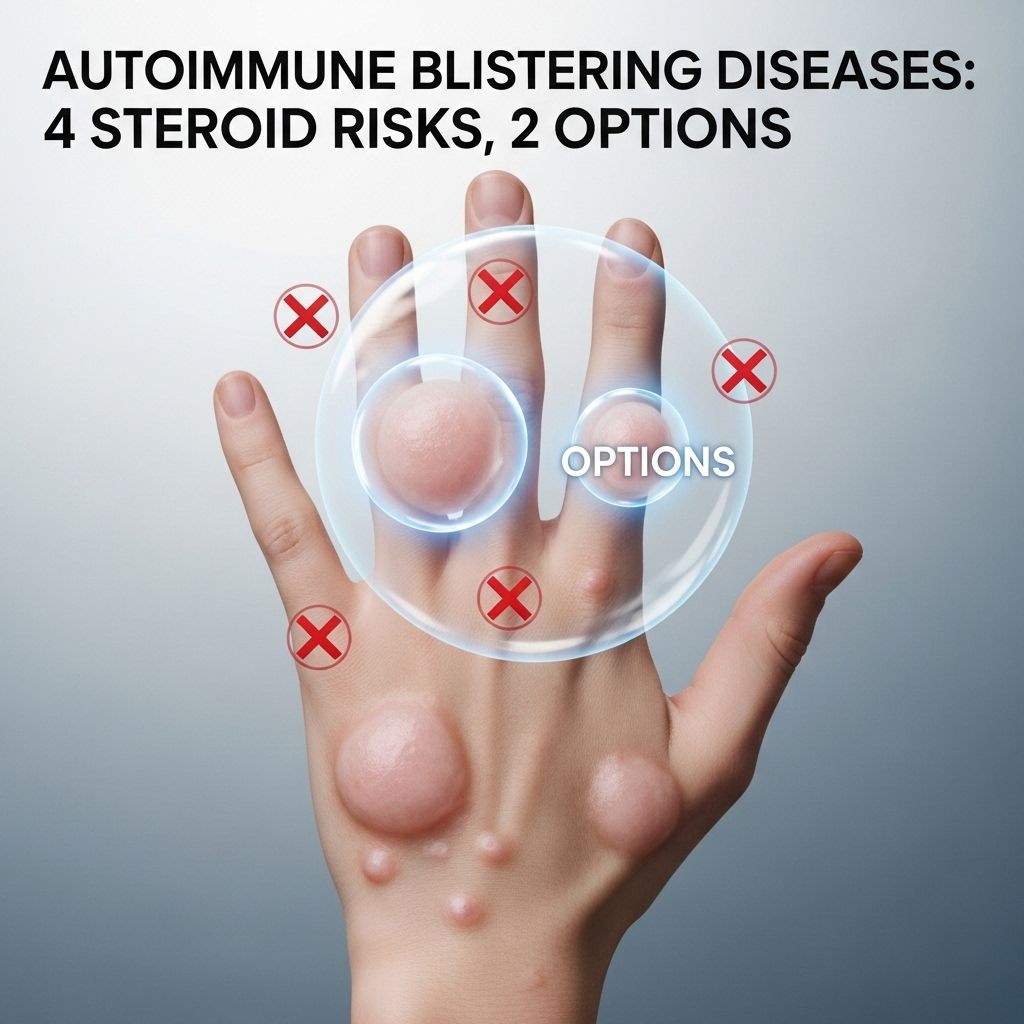Systemic Corticosteroids for Autoimmune Blistering Diseases
Emerging approaches target autoantibody reduction with gentler intervention.

Introduction to Autoimmune Blistering Diseases
Autoimmune blistering diseases are a group of rare, potentially debilitating conditions characterized by blister-like lesions on the skin and mucous membranes. These diseases result from autoantibodies targeting specific proteins crucial for maintaining skin integrity. Common examples include pemphigus vulgaris, bullous pemphigoid, and pemphigus foliaceus.
Role of Systemic Corticosteroids in Treatment
Systemic corticosteroids, such as prednisone, are the primary treatment for moderate to severe autoimmune blistering diseases. They exert potent anti-inflammatory and immunosuppressive effects, significantly reducing disease severity and mortality. However, their use is also associated with a range of side effects, including weight gain, osteoporosis, diabetes, and cardiovascular issues.
Common Side Effects of Systemic Steroids
- Weight Gain and Metabolic Changes: Steroids can lead to weight gain and changes in metabolism, increasing the risk of obesity and diabetes.
- Bone Health Issues: Long-term use can result in osteopenia and osteoporosis, increasing the risk of fractures.
- Psychological Effects: Insomnia, depression, anxiety, and mood changes are common psychological side effects.
- Hypertension and dyslipidemia are potential cardiovascular complications.
Alternatives and Complementary Therapies
Given the significant side effects associated with systemic steroids, researchers and clinicians have explored alternative and complementary therapies to reduce steroid dependency.
Steroid-Sparing Agents
- Rituximab: This monoclonal antibody has shown promise in reducing steroid doses while maintaining disease control, particularly when used in combination with steroids.
- Protein A Immunoadsorption (PAIA): PAIA can be effective in reducing autoantibody levels, allowing for lower steroid doses and improved outcomes.
Challenges and Future Directions
Despite advances in treatment, managing autoimmune blistering diseases remains challenging due to their complex etiology and heterogeneous presentation. Future research aims to develop more targeted therapies with fewer side effects, improving patient outcomes and quality of life.
Current Research and Developments
Studies are ongoing to explore novel treatments that can reduce the reliance on systemic steroids. These include the use of intravenous immunoglobulins (IVIG) and other immunomodulatory therapies.
Frequently Asked Questions (FAQs)
Q: Are systemic corticosteroids effective in treating autoimmune blistering diseases?
A: Yes, systemic corticosteroids are highly effective in managing the symptoms and reducing mortality in autoimmune blistering diseases, but they come with significant side effects.
Q: What are the common side effects of systemic corticosteroids in this context?
A: Common side effects include weight gain, osteoporosis, diabetes, hypertension, and psychological changes.
Q: Are there any alternatives to systemic corticosteroids for treating autoimmune blistering diseases?
A: Yes, alternatives such as rituximab and PAIA are being explored to reduce steroid dependency and associated side effects.
Conclusion
While systemic corticosteroids remain a cornerstone in the treatment of autoimmune blistering diseases, ongoing research is crucial to develop safer, more effective therapies that minimize side effects and improve patient outcomes.
References
- https://www.steritas.com/insights/steroid-toxicity-in-dermatology-taking-a-stand-for-patients-with-autoimmune-blistering-diseases
- https://pubmed.ncbi.nlm.nih.gov/25405675/
- https://pubmed.ncbi.nlm.nih.gov/23651052/
- https://onlinelibrary.wiley.com/doi/full/10.1111/jdv.20460
- https://www.mayoclinic.org/diseases-conditions/bullous-pemphigoid/diagnosis-treatment/drc-20350419
- https://www.frontiersin.org/journals/immunology/articles/10.3389/fimmu.2023.1157250/full
- https://jcadonline.com/a-practical-approach-to-treating-autoimmune-bullous-disorders-with-systemic-medications/
Read full bio of medha deb












